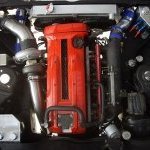"PINEAPPLES" - Before/After Review
Announcements
-
Similar Content
-
Latest Posts
-
I find that a single 50mm plank is sufficient to raise the car to get a low profile trolley jack under the engine cross member or rear diff. Then I use a 50mm block on the trolley lift point.
-
By RB25inside · Posted
UPDATE: Yes the GSP Axles are compatible. I installed it on my R34 today and they are working a treat! Turns out that the S13, S14, S15, and 200 SX all used the same axles as the HR34, and ER34 NA models. Which is 2 bolt x 3 pairs. -
Also build this EH ute with 370z motor and gearbox with a couple of turbos just for fun.
-
Got the passenger door on plus the master cylinder and booster. Loaded up to take it home. At home, the colour changes a lot in the light.
-
By joshuaho96 · Posted
Nothing cheap, but I have seen the AC Hydraulic DK13HLQ which is pretty close to what you're asking for. The problem is the hydraulic cylinder mandates that the back of the jack be a certain height and Skylines have fairly deep inset floor jack points. A more certain and cheap option is to get some nominal 2x10 inch lumber boards and have one board be 1.5 feet, the other board 3 feet. Glue it all together with lots of clamps to maintain pressure. Make two of these. The ramp suggested above is a good idea, it takes quite a bit of clutch slip to get over each of the boards. I only need the first ~1.5 inches for my low profile jack on a standard ride height car but a lowered car you want to go up to the full ~3-3.5 inches. Paint it or store indoors if you want it to last.
-




Recommended Posts
Create an account or sign in to comment
You need to be a member in order to leave a comment
Create an account
Sign up for a new account in our community. It's easy!
Register a new accountSign in
Already have an account? Sign in here.
Sign In Now